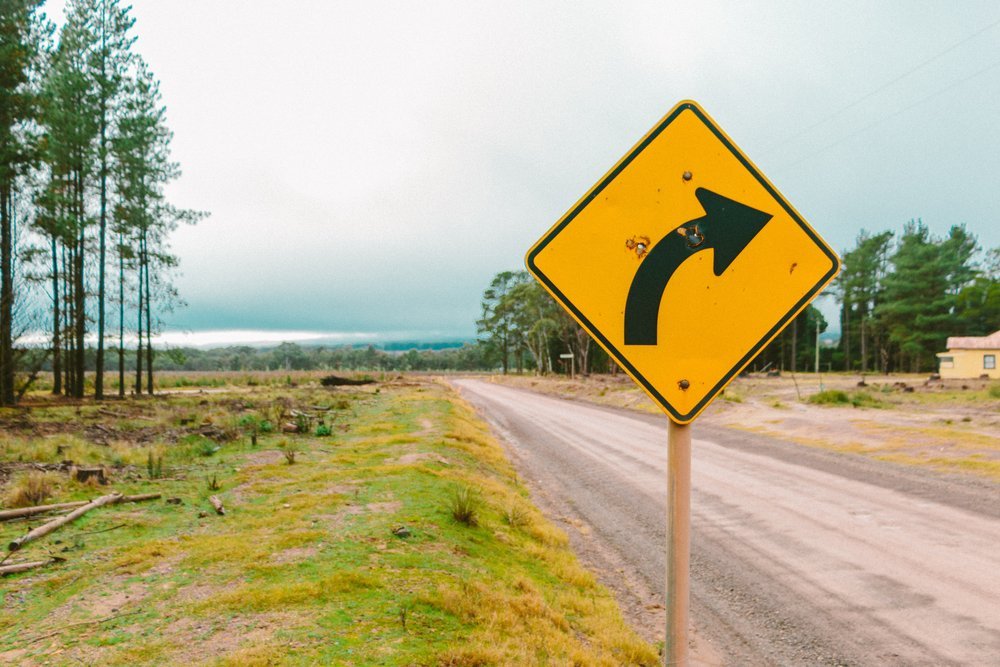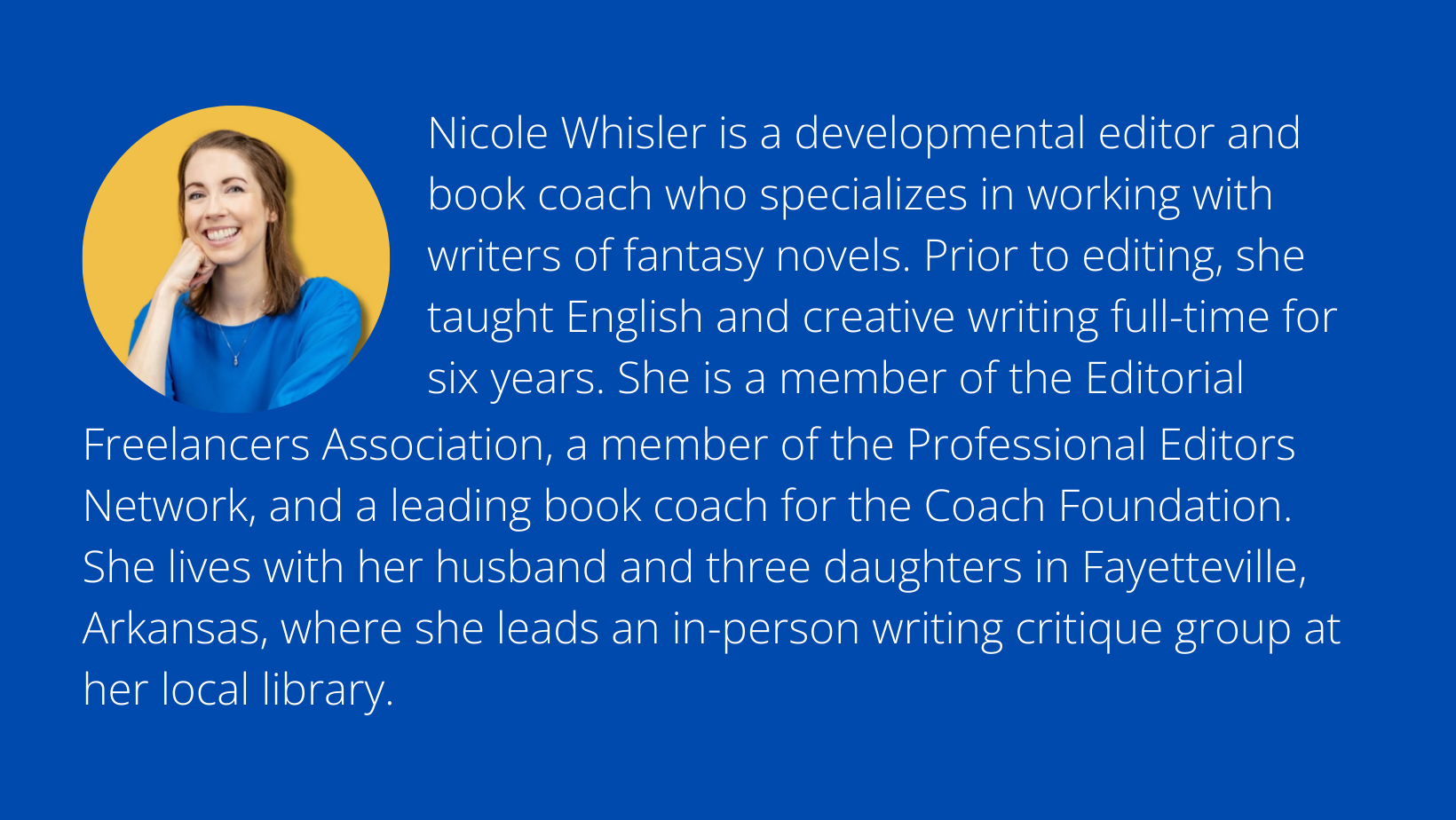Whisler Edits Blog

How to Write a Scene That Works
Discover in this post …
how I embarrassed myself in seventh grade.
how restrictions can enhance creativity.
how employing five building blocks and a turning point can help you devise tight, effective scenes.
I was the kind of kid whose best subjects in school were math and English.
Not your standard “math and science” or “English and history.”
Nope. Math and English.
I’m no psychologist, but those subjects align well with my personal qualities: I’m imaginative, yet I’m also analytical.
So when I hear the term “formula” in relation to fiction, my mind starts a fight with itself.

Analytical side: Yes! Tell me exactly how this works so I can effectively reproduce it in my writing.
Imaginative side: Uh-uh! Get that formula away! No chance I’m going to let it stifle my creativity.
Let’s look at a related case study. Walk back with me over twenty years ago to my twelve-year-old self. Tallest kid in my class, awkward, with braces and purple-rimmed glasses. The stereotypical kid who does-well-in-school-and-also-reads-a-lot.
My seventh-grade English teacher assigned the class a story to write. He gave no topic or length requirement, just a simple instruction: “Write a story. It can be about anything. Due tomorrow.”
I proceeded to write the world’s worst story.
No joke. I really, really struggled with that assignment. I thought long and hard about what to write, and what I came up with was this: A girl goes for a walk through the woods and sees a deer. She stops and makes eye contact with the deer for a long moment, thinking about its beauty. Then she returns home.
I fleshed out more details in my actual story, but essentially, that was it. That’s all that happened in the story. Which is to say, nothing.
I brought my three-page story to school the next day and turned it in (remember, I was a good student), fully aware of how boring the story was. If luck had been with me, my teacher would simply have scanned it, given me an A or a B for effort, and sent me on my merry way.
But luck kept its distance from me that day. During English class, Mr. Peter read my story aloud in front of all my classmates. Not because it was good, but because it happened to be on top of the pile. My teacher had no ill intent, and probably no idea that this was a self-conscious writer’s worst nightmare.
It gets worse.
While my teacher read, one of my classmates was messing around, laughing and whispering with his friends. Dante was a squirrelly seventh-grade boy, so it’s possible his behavior may have been unrelated to the poor quality of my writing.
Once Mr. Peter reached the end of my awful story, he paused, looked directly at Dante, and held out my story. “What happened in this?”
Dante stopped moving and stared at Mr. Peter, who stared back.
“You can’t answer, can you? You weren’t listening. Here. You read it.”
A few seconds passed, but when Dante realized Mr. Peter was serious, he complied. He shuffled to the front of the room, took my story, and read it a second time out loud in front of the class. He started laughing about halfway through, and—still no joke—the teacher MADE HIM START OVER.
If you’re good with math, and if you happen to be counting, that’s two and a half times that my horrible, horrible story was read aloud in front of my English class. Mr. Peter didn’t tell the class whose story it was. But if anyone had glanced at me, my hunched posture and red face would have given me away.
This painful memory has a point. Ultimately, the most valuable lesson I learned from the assignment—though it didn’t occur to me until years later—is rather basic: limitation breeds creativity.
The flip side of this idea is known as the “paralysis of choice.” With writers, it refers to feeling overwhelmed by the unlimited possibilities of a blank page. Business psychologists speak of “decision fatigue.” It’s one of the reasons Apple does better with fewer product lines, and why Trader Joe’s is such a success by focusing on (and allowing its customers to focus on) 4,000 products compared to the 50,000 carried by the average grocery store. There’s even a French movement, founded in 1960, called Oulipo—a group of mathematicians and writers who use severe restrictions as they create their works (such as writing an entire novel without the letter “e”). You don’t need to take this concept that far, but you get the idea of this paragraph: somewhat counterintuitively, no one likes making decisions when their choices are unlimited!
If Mr. Peter had told the class, “Your story needs to include a unicorn, a snow shovel, and a curse,” I could have worked with that. But the assignment was completely unrestricted, and placing no limits upon it backfired (in my case, at least). Rather than swim in a sea of possibilities, I sank.
I needed focus, and I needed structure. I’m not someone who believes in magical formulas. But I’ve come to believe that a few simple guidelines can truly enhance creativity. I’ve learned a great deal from experienced editor Shawn Coyne, who proposes that scenes need two elements in order to work: 1) five simple building blocks and 2) a clear turning point.
You don’t need to concentrate wholly on these elements every time you sit down to write. Do what works for you. You might keep these items in the back of your mind, or reserve them for your second pass on your work. Use them as diagnostic tools that can assist you when your writing is “off,” and you’ll keep your scenes moving in the right direction.
The other place these building blocks and turning point are especially helpful (in addition to keeping them in your back pocket) is when you’re starting a new scene, when you’re looking at the blank page.
Here are the five building blocks that help create a working scene:
Inciting Incident = the event that upsets the starting balance of the scene
Progressive Complication(s) = the items that make things BETTER or WORSE for your character
Crisis Question = the mental question your character must ask (often a choice between two negative options or two positive ones)
Climax = the answer to the crisis question
Resolution = what changes as a result of your character’s response to the question
A turning point in a scene is a shift from one value to another—or in other words, a clear change.

To illustrate both parts of this structure (the building blocks and the value shift/turning point), let’s get practical.
Say you are writing about fourteen-year-old Liza, who has recently moved across the country to an unfamiliar place. At her old school, she was known as shy and timid. Because everyone saw her this way, this character trait turned into a self-fulfilling prophecy. Students and teachers regularly reinforced the idea that Liza didn’t have ideas to share and that she needed help expressing her opinions. They labeled her “the quiet one.”
On her first day at her new school, a helpful classmate leads Liza to a lunch table full of students. Right away, someone asks her about herself. Liza’s instincts urge her to whisper her name and where she’s from, then crawl back into herself. But something inside Liza wars with this instinct. She remembers her father’s words earlier that day: “Be brave. Be strong. Be proud.” She remembers how weak she felt at her old school, and how she wished she were more confident and comfortable with herself. She’s aware no one knows her at this new school, and it’s up to her to make a strong first impression. She also started acting classes the past summer, and her theater teacher makes her feel like she can be anyone.
So instead of sinking into her seat and mumbling a quick response, Liza sits up straight. She makes her voice loud and confident as she introduces herself, meeting the others’ eyes, then asks a question in return. Her heart is pounding, but no one at the table can tell.
Let’s look at how the five building blocks play out in this scene:
Inciting Incident: Liza moves across the country. (Sometimes, as in this case, the inciting incident occurs before the scene’s physical events.)
Progressive Complication(s): A student speaks to Liza and expects an answer. This is a complication because Liza doesn’t like to be the center of attention.
Crisis Question: Will Liza muster the courage to reinvent herself, uncomfortable though it might make her, or will she embrace the easy, uncomplicated route that will likely end in a repeat of her past school experience?
Climax: Liza finds the strength to confront her fears. She answers with confidence and poise.
Resolution: The students at the table keep up the conversation, resulting in new friendships and a boost in morale for Liza.
Value shifts and turning point:
Turning points can occur in one of two ways:
1. through action (somebody does something) or
2. through revelation (new information comes to light).
The turning point of a scene occurs in conjunction with the climax. In the scene above, it’s the moment when Liza advances from “isolated” to “accepted”—when the scene changes from negative (focusing on Liza’s apprehension) to positive (focusing on Liza’s accomplishment). You could say Liza’s scene turns on action (when she makes the decision to speak up) or on revelation (when she understands she has the power to reinvent herself). It depends on what you choose to focus on in your scene. Scenes can shift from a positive to a negative, a negative to a positive, a positive to a deeper positive, or a negative to a deeper negative. The key is to make your turning point as clear as possible.
Related to the value shift (“isolated” to “accepted”), you can make up whatever words you feel fit your scene’s movement best. Maybe your scene shifts from “satisfied” to “dissatisfied,” “excited” to “dejected,” or “ignorant” to “enlightened.” The list is endless, and you know your story best. Since you won’t be showing your value shifts to your readers, choose whatever words you like. Value shifts are simply meant to help you track your story’s movement and to ensure your storyline and characters are constantly changing.
If I’ve gone too deep here—if the words “progressive complication,” “turning point,” and “crisis question” make you want to chew on your hair and find some chocolate to eat—then forget about them and just write. (And find that chocolate.) You can always come back to this information at a later point. There aren’t many guarantees in writing, but I can offer you one: anything you write, anything at all, is bound to beat my girl-meets-deer story.
Choose a scene you’ve written and analyze it according to the five building blocks, value shift, and turning point as described above. How did this “formula” work for you? Did it help you discover anything deeper about your characters or storyline, or sharpen a challenging part of your scene? Do you have additional ideas that differ from Shawn Coyne’s approach? I’d love to hear your revelations and further thoughts in the comments below.
Do you want to learn how to write a story that makes your target readers stand up and cheer? If you’d like support from A to Z (from brainstorming to drafting to revising to publication), book a Discovery Call with me to see if you’re a good fit to join my book coaching program, Fantasy Footsteps: Road to Publication. And if you haven’t done so already, grab your Free Guide on how to hook readers from your story’s start!

